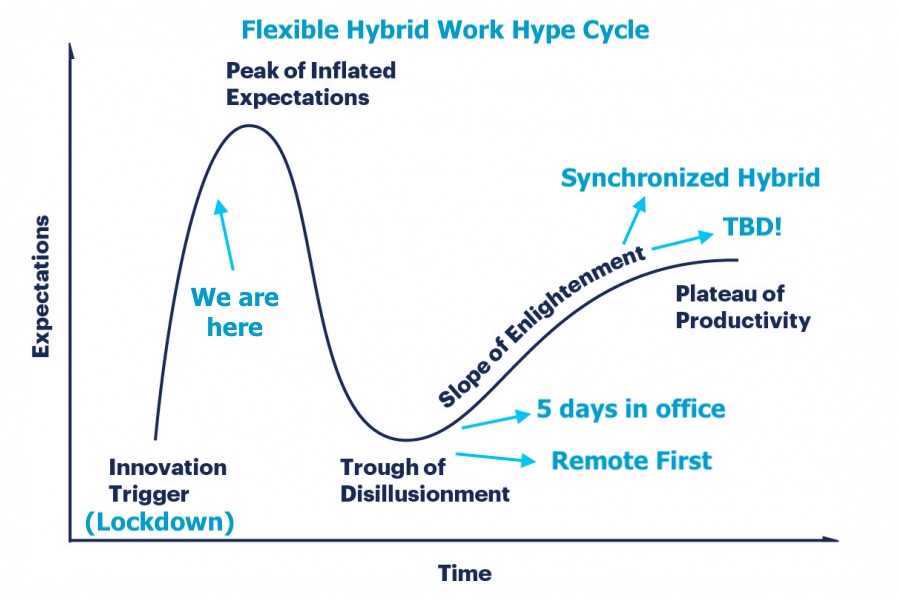McKinsey popularized the 7-S framework in the 1970s. It’s designed to help organizations of all sizes coordinate and cooperate.
Managing growth is difficult. Organizational leaders often wrestle with maintaining competitive advantage with their core business and maximizing organizational effectiveness, building emerging products and revenue streams, and creating viable options to ensure long term health of the company remains intact.
Across each key stage of growth, company leaders have to make sure people, process, and tools are working together in a symphony.
Quarterly executive meetings at high growth companies require deep dives in these operating buckets:
- People: do we have the right people in the right roles at the right time?
- Process: do we have the right systems that can enable our staff to do their best work?
- Tools: do we have the right tools to amplify our staff and support our systems?
There are many other things that get discussed and managed, but operations of the organization functionally come down to people, process, and tools.
As organizational size increases from 2 people to 10 people to 50 people, and then 500+, dialing in specific components across each stage of growth becomes paramount. What got the business here will not get it there.
The reality is that most companies cannot change their processes and tools instantaneously; this is certainly true at large orgs. It takes time to reflect and identify key challenges and paint points. Most tools require annual contracts. Most systems take months to implement. Having a framework to grade your tools and systems quarterly positions you to be proactive when it’s time to adjust. Too often companies reactively tackle their growing pains.
High growth companies have to rethink their existing programs every 12-18 months. Many early programs won’t scale as the company grows.
McKinsey’s 7-S framework is a wonderful model for companies to study. Consider this a “tool” you can use to analyze a company’s organizational design and structure.

Tangible elements:
- Structure: org chart. Reporting structure of teams.
- Systems: process management, tools and workflows — how things get done.
- Strategy: beating competition. Managing core business, emerging opportunities, optionality.
Intangible elements:
- Shared values: core values of a company. What the company stands for and why it exists. This drives company culture.
- Skills: company skills and capabilities that enable people within the org.
- Staff: people capabilities and their aptitude.
- Style: style of leadership and leading by example. This is like a code of conduct that the rest of the company adopts. This personifies company culture.
When I worked at Facebook, we applied components of this framework often. Here’s how we used it:
- Shared values. Company mission was obvious at the time: make the world more open and connected. It always started with shared values. Anyone we hired, trained and built up had to live this mission statement. Regardless of whether you were a VP or a janitor. Everyone was dedicated to making this happen.
- Structure. Org charts were available to everyone. Doesn’t matter if you were IC 1 or in management. You could see who reports to who; nothing was blurry. For the first 10 years of Facebook, it remained a relatively lean organization.
- Systems. FB moved at the speed of light. Every day felt like a week. Some systems were dialed in, others not so much. This wasn’t a bad thing. It was good for entrepreneurial minded staff members to help build those systems and operating principles.
- Strategy. FB built one of the best advertising businesses. When I joined the company, it had < 800K monthly active advertisers. Today, that number extends beyond 8M. All the bets that FB put in to build their core business paid off. The advertising business funded engineering and product road maps. Which enabled emerging product lines that eventually became great businesses. And those emerging businesses made way for moonshot projects like AR/VR, etc.
- Skills. As teams were built across product, engineering, sales, marketing and more, each group had a dedicated leader with a set chain of commands underneath to build the program. Global Marketing Solutions — team I sat on — was tasked to drive revenue, sales and support across all regions for advertisers. Each group had dedicated capabilities and staff that enabled rocket ship growth.
- Staff. Within each group, the staff hired were tasked with specific goals and outcomes. Some vague, some concrete. For the most part, it was concrete. FB is one of the most metrics-driven organizations in the world. It provided proper L&D for staff to ensure they have the aptitude and tools needed to succeed.
- Style. This came down from Zuck, Sheryl Sandberg, Chris Cox and others. The best way to describe it is gently assertive. Laser focused on getting things done yet still empathetic.
When I joined the company, it had < 6K employees around the world and the business was 10 years old. It now has 60K+ employees with complex organizations and projects. I’m sure a lot has changed over the years, but the way FB applied the 7-S framework was phenomenal.
FB is an outlier. Not all companies grow exponentially. The framework, however, used in large organizations can be applied to companies of all sizes.
The future of work (and organizations) is hybrid. Chain of commands is driven by who connects with whom on Slack, and who provides the approval. Traditional models will likely be challenged.
Dustin Moskotivz, founder of Asana, discusses hybrid work briefly here.

Many things will need to be adjusted as organizations expand geographies, build a hybrid model of in-office vs remote, local vs international… the list goes on.
Agnostic to the size of your organization, management frameworks like the 7-S model can reduce complexity and make the abstract feel concrete. When in doubt, lean on these models to help you manage growth.